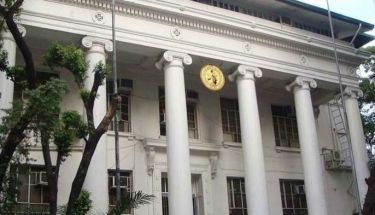Cloud seeding after volcano eruption needs to be studied first, Phivolcs says
MANILA, Philippines — The Philippine Institute of Volcanology and Seismology on Tuesday said suggestions to conduct cloud seeding following the eruption of Taal Volcano in Batangas has to be studied first.
In a press briefing, Renato Solidum, Phivolcs director, explained that it is good to have rains after the eruption as it would wash down the ashes blanketing the plants and houses.
However, Solidum said the move should not be done in haste.
“In general, cloud seeding is a good idea, but how to operationalize it, you really have to study it,” he said.
Solidum added it is hard to conduct cloud seeding when there is no cloud to seed in producing rain, stressing that proper study should be made to make it successful.
“Pero kung gaanong kalaking ulan ang mapo-produce n'yan at kung saan tatama ‘yung ulan, obviously, dapat meron kang ideal condition na ika-cloud seed mo,” he also said.
(But the amount of rain it would produce and where it would fall over, obviously, there should be an ideal condition where you will cloud seed.)
While Solidum agrees that cloud seeding is “good in general”, he also mentioned the possibility of triggering flood and lahar.
“Well, this has to be studied. Kung titignan mabuti, obviously, kung masyado maraming tubig, e mawa-wash down ‘yung abo sa gilid, at may banta ng flood or lahar dahil wina-wash down] 'yung mga abo,” the Phivolcs official said.
(Well, this has to be studied. If you look at it closely, obviously, if there is too much water, it will wash down the ash on the side, and there is a threat of a flood or lahar because it is washing down the ash.)
Phivolcs said lahar is “sometimes called volcanic mudflows or debris flows, are slurries of volcanic sediment, debris and water that cascade down a volcano’s slopes through rivers and channels.”
It said that it is “mainly generated by torrential rainfall on unconsolidated deposits from a past eruption.”
“These can also be triggered by the sudden draining of a crater lake or a collapsed natural or man-made dam or the movement of a PDC (Pyroclastic Density Currents) into a river or lake and eventual mixing with water,” Phivolcs also said.
Phivolcs was asked by the press on cloud seeding after Senate President Vicente “Tito” Soto III called on the government to conduct a cloud seeding in the Taal Volcano-affected areas to wash down the ashfall debris and clear up the air.
“Now is the time for cloud seeding in the Taal Volcano affected areas!” Sotto said on Twitter.
Now is the time for cloud seeding in the Taal Volcano affected areas!
— Tito Sotto (@sotto_tito) January 13, 2020
“I'm proposing Cloud Seeding action in the Taal Volcano affected areas and not wait for the rain. I sent word to the executive department through Bong Go and ES Medialdia,” he was also quoted by reports as saying.
According to reports, Sotto claimed Medialdea already told him that his proposal would be considered.
The Senate president, likewise, said his suggestion has been relayed to the Philippine Air Force. He claimed the agency is also supporting his idea of cloud seeding and is conducting studies to determine when can they fly over the affected areas to enforce the plan.
- Latest
- Trending































